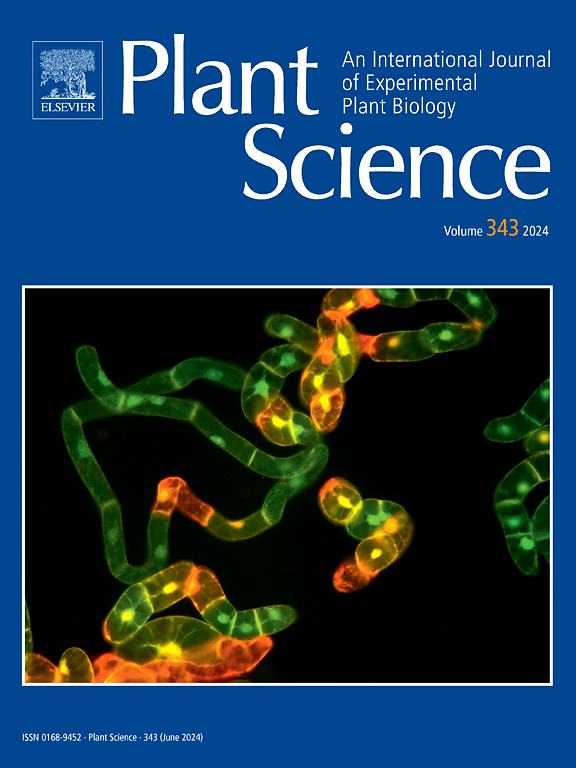Characterization of an iron-induced enzyme, nicotianamine synthase, from giant leucaena
IF 4.2
2区 生物学
Q2 BIOCHEMISTRY & MOLECULAR BIOLOGY
引用次数: 0
Abstract
Metal homeostasis in giant leucaena (Leucaena leucocephala subsp. glabrata) is of interest due to the plant’s production of mimosine, an iron-chelating secondary metabolite. Real-time PCR performed on root and foliar tissue showed the upregulation of 19 genes following exogenous application of iron. Notable genes affected include glutathione synthase (20-fold increase in leaf), ferric chelate reductase (15-fold increase in root), mimosinase (20-fold increase in leaf) and nicotianamine synthase (30-fold increase in root). Transcriptome sequence data and 5’-RLM-RACE methods identified the complete nicotianamine synthase coding sequence, which was cloned for heterologous expression and in vitro assays. To properly assay nicotianamine synthase activity, due to strong feedback inhibition by 5’-methylthoadenosine, the giant leucaena 5’-methylthoadenosine nucleosidase was cloned and purified as well. Additional inhibition produced by the substrate compound, S-adenosylmethionine (SAM), was discovered in this study by utilizing a recombinant SAM-synthetase. Nicotianamine synthase is sensitive to racemic mixtures of SAM, which is inevitably produced in commercial SAM solutions. When substrate was produced in situ, using SAM-synthetase, nicotianamine synthase activity was 5-fold faster. Thus, in vitro nicotianamine synthase activity depends highly on two additional enzymes, the inclusion of MTA-nucleosidase being vital. Although promising, cell-free nicotianamine production methods are not yet efficient enough for industry-scale efforts. Sequence and structural analyses suggest residues involved in azetidine ring formation and other aspects of the mechanism are explored.
求助全文
约1分钟内获得全文
求助全文
来源期刊

Plant Science
生物-生化与分子生物学
CiteScore
9.10
自引率
1.90%
发文量
322
审稿时长
33 days
期刊介绍:
Plant Science will publish in the minimum of time, research manuscripts as well as commissioned reviews and commentaries recommended by its referees in all areas of experimental plant biology with emphasis in the broad areas of genomics, proteomics, biochemistry (including enzymology), physiology, cell biology, development, genetics, functional plant breeding, systems biology and the interaction of plants with the environment.
Manuscripts for full consideration should be written concisely and essentially as a final report. The main criterion for publication is that the manuscript must contain original and significant insights that lead to a better understanding of fundamental plant biology. Papers centering on plant cell culture should be of interest to a wide audience and methods employed result in a substantial improvement over existing established techniques and approaches. Methods papers are welcome only when the technique(s) described is novel or provides a major advancement of established protocols.
 求助内容:
求助内容: 应助结果提醒方式:
应助结果提醒方式:


